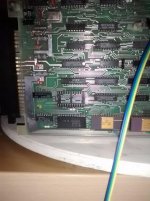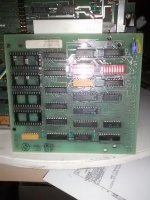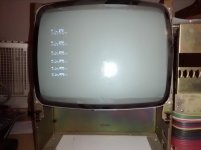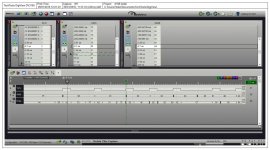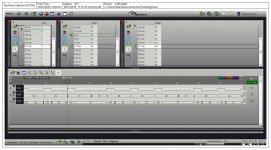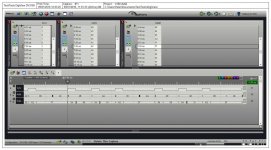acollins22
Experienced Member
Hello Folks,
I am trying to repair my VT180 for this year's Retrochallenge.
So far I have proved the voltages to the boards are OK. I am trying to get the VT100 side working first and then the VT18x board and so I have just got the VT100 part on its own (connected to the monitor). I get a poorly synced display of garbage multiple times down the screen.
I have removed the extended graphics card so that I can get to the processor and I have also removed the comms board that links the VT100 to the 18x. This hasen't made any difference.
The CPU seems to be running, there is activity on the bus. However, I don't see much change on the data bus. It could be stuck in a loop waiting for the keyboard but I don't seem to see any activity on D4-7 (IIRC, not near it at time of writing!)
Please could someone give me some clues as to what to looks for on these? I have a 'scope and soldering kit and I'm not afraid to go in!
Thanks very much.
Andy.
I am trying to repair my VT180 for this year's Retrochallenge.
So far I have proved the voltages to the boards are OK. I am trying to get the VT100 side working first and then the VT18x board and so I have just got the VT100 part on its own (connected to the monitor). I get a poorly synced display of garbage multiple times down the screen.
I have removed the extended graphics card so that I can get to the processor and I have also removed the comms board that links the VT100 to the 18x. This hasen't made any difference.
The CPU seems to be running, there is activity on the bus. However, I don't see much change on the data bus. It could be stuck in a loop waiting for the keyboard but I don't seem to see any activity on D4-7 (IIRC, not near it at time of writing!)
Please could someone give me some clues as to what to looks for on these? I have a 'scope and soldering kit and I'm not afraid to go in!
Thanks very much.
Andy.

